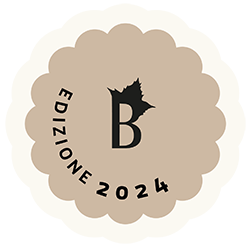In the heart of the territory inhabited by the ancient civilizations of Barbagia there is the hospitable country Fonni.
The customs and beliefs of the first communities to inhabit the area are witnessed by numerous menhirs (Sardinian perdas fittas) and Domus de Janas, rock-hewn tombs dating the end of the IV - beginning of the III millennium BC
More than 40 nuraghis document the nuragic age. Of particular fascination is the site of Gremanu - Madau: a settlement dated from the fifteenth to the ninth century BC famous for the exceptional work of hydraulic engineering that enabled it to take spring water from the mountain to the sacred rituals and the daily needs of the village.
Between the first and second centuries BC, in the northern suburbs of Fonni, was Sorabile, mansio (a station for the reception of travelers and the pack of horses ) part of the important Roman per Mediterranean that connected Olbia to Cagliari. The town also housed a shrine dedicated to Silvano, patron deity of the sacred grove of Sorabile connected to the barbaricino cult of the spirits of the trees.
According to the popular story of its inhabitants, they abandoned it after a severe plague moving to nearby villages populated by barbaricine communities of Celesitani. Probably Sorabile was burned and destroyed as a result of an attack by Vandals in the fifth century AD.
During the Middle Ages the name Fonni was mention for the first time as a village belonging to the county of Arborea to which it provided many soldiers. With the victory of the Aragonese army and the extinction of the Judicial dynasty its lands were feudalised to several Spanish nobles, and the center became the head quarters of the Barbagia of Ollolai baronial administration.
From the mid-seventeenth century until 1811 the country was torn by a bloody clash against Villanova and Villagrande Strisaili: for “real safeguards” the center, which the economy was based on farming, was ousted from the use of the pastures of the so-called “Monte Indivisu” managed until then in communion with the neighboring towns. Because the land was not sufficient for the flocks, the shepherds repeatedly disobeyed blind imposition of the government, Spanish first and Savoy after, to clear the area, until they obtained the cession of a third of the land upon payment of a fee to the other two centers.
A new battle for survival took place in 1969 when the Italian government imposed the construction of a shooting range in the pastures between Fonni and Orgosolo. After only a month from development, the village of Pratobello (in which would have lived the military families) was abandoned because of the peaceful uprising of the people who occupied the bulk fields.
At the foot of the “silver door” (Gennargentu), guarded by woods and surrounded by stunning countryside there is Fonni, the highest mountain village in the island (1000 m asl).
Its location made it an important tourist destination for mountain sports. The ski resort is particularly popular during the winter. There are ski lifts on Monte Bruncu Spina and Monte Spada. Even during the rest of the year many travelers choose to visit this territory for the beauty of the landscapes and the wealth of flora and fauna.
Exciting scenarios in a still wild and untouched area from where you can take excursions to picturesque canyons and breathtaking views, like the one that can be enjoyed from the tip of the Bruncu Spina 1829 m high.
It lies between rivers and springs, and open valleys adorned with gorse, thyme and helichrysum. Spring offers enchanting spots of color: the flowers of the peony, gentian, rose hips and foxglove frame the tree species of walnut, cherry, maple and ancient woods of yew, oak, holm oak.
In this nature reserve you can see the different wild life species that inhabit the mountain such as the mouflon, wild boar, Sardinian euprotto, wild cat, marten and the tree frog but also many varieties of birds: eagles, goshawk, peregrine falcon, buzzard, and the Sardinian partridge.
This is the home of the pastore fonnese, a canine breed endemic in high demand for the defense of the properties and the herds.
The numerous monuments scattered throughout the territory narrate a long history that dates back to the Neolithic period. At this age are dated mythical stones, the so-called “ perdas fittas ”, ie the menhirs, and the Domus de Janas , tombs carved into the granite after the neolithic age “to allée” Su Monte Santu Micheli.
In the Bronze Age develops the nuragic civilization with its exceptional architecture. Among the many sites, Logomache (1400-1000 BC), preserves the remains of an imposing structure consisting of a central nuraghe enclosed by a rampart with three towers, all around are located the huts of the village. To the recent and final Bronze Age dates the necropolis of Madau consisting of four graves of giants. These fascinating tombs bear a typical “bull’s head” shape, a fundamental divinity of the ancient religion of the Sardinians.
Not far away is the unique shrine of Gremanu from the IX - XII century B.C. In addition to the huts of the village, are visible in the area, several temples in which they held sacred rites dedicated to the worship of water, but above all an extraordinary prehistoric aqueduct. The presence of a system for the collection and distribution of water testifies the high level of engineering knowledge of the era.
Along the streets of the town, in the oldest quarters, are kept the characteristic mountain homes with one or more floors, built with local stone, and in some are still visible the scandulas, archaic wooden shingles. An example of a typical house is given by the nineteenth-century building, the Museum of pastoral culture of Fonni which still has some original furnishings.
Among the tangled streets of the old town you will see the beautiful murales which are illustrated scenes from everyday life, past or present, and representations of the deepest traditions by the inhabitants.
In one of the original neighborhoods is the church of the patron, San Giovanni Battista, it was rebuilt in the sixteenth century and preserves the architectural elements of the Gothic style. On the occasion of the celebration of the saint, June 24, is still prepared according to the ancient customs, a ritual bread called Su Cocone de Frore s carried in procession by horsemen in traditional dress.
It is entitled to the Vergine Dei Martiri, the shrine built in the 700s within the picturesque complex that, besides the church includes the convent of San Francesco and the Oratory of San Michele. All facilities are overlooking the large square enclosed in the cumbessia, designed, ages ago, to accommodate the pilgrims.



